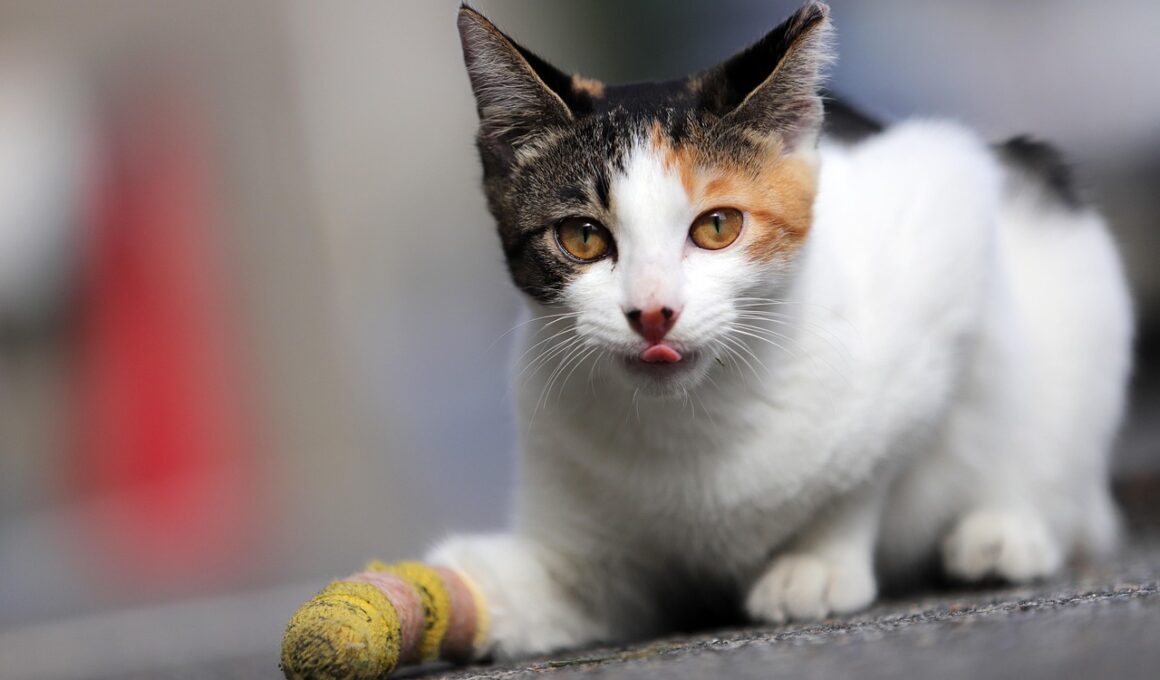How to Approach an Injured Cat in Outdoor Environments
Encountering an injured cat outdoors can be a disconcerting experience for any animal lover. When you see a cat that appears injured, it is essential to approach the situation with care and caution. First, assess the surroundings to ensure it is safe to approach the cat. Observe the environment for potential threats such as other animals or moving vehicles. Next, determine the cat’s condition; is it lying still, struggling to move, or showing signs of distress? Gaining a clear understanding of the cat’s demeanor will help you plan your approach effectively. Avoid sudden movements or loud noises that may startle the cat, causing it to panic or react defensively. Instead, take slow, deliberate steps while speaking softly to reassure the cat of your presence. Keep a safe distance initially, as this will help you gauge its reaction. Always remember that an injured cat may perceive you as a threat, especially if it is in pain. Keeping calm and patient during this process is crucial in earning the cat’s trust and ensuring safety.
Understanding Cat Behavior in Distress
Understanding cat behavior, especially in distress, is critical when approaching an injured feline. Cats may exhibit various signs when they are hurt or scared. For example, an injured cat might hiss, growl, or try to swat at you, indicating fear or pain. Recognizing these signals is crucial for your safety and the cat’s wellbeing. If possible, remain at a distance until the cat shows signs of calming down, such as less hissing or an upright tail. If the cat attempts to retreat, allow it to do so without pressure; it’s important to avoid cornering it as this may agitate it further. Offering gentle encouragement by speaking softly can help alleviate its stress. If the situation allows, sit or kneel to appear less intimidating. Patience is key, as rushing the process may lead to unnecessary panic and a defensive reaction. Additionally, prepare yourself mentally for the possibility that the cat may flee, which is normal behavior in an injured animal. Maintaining a calm demeanor can foster a safer environment for both you and the cat.
Before attempting to help the injured cat, prepare essential supplies that will aid in the rescue process. Having the right items on hand can significantly improve the situation and ensure the cat’s comfort. First, consider bringing a soft blanket or towel, which can help transport the cat safely without causing more harm. If you have a carrier, it’s the safest option for moving the cat once it’s calm. Additionally, having first aid materials, such as gauze and antiseptic, can be beneficial if you need to administer any initial care. Most importantly, you should maintain safety gear for yourself, such as gloves, to minimize the risk of being bitten or scratched by a frightened cat. Also, check local laws regarding animal rescues, as regulations may vary. Always prioritize calling a veterinarian who can provide further assistance and advice tailored to the cat’s condition. Remember that acting swiftly and efficiently while keeping the cat calm can make a substantial difference in the outcome of the situation for the injured feline.
Approaching the Cat Safely
Approaching the injured cat requires both strategy and sensitivity to ensure a safer interaction. After you have observed the cat for a while and it seems somewhat calm, you can take a few cautious steps closer. Always approach sideways instead of head-on; this is less threatening for the cat and can help establish trust. Extend your arm slowly with your palm facing up, offering a scent for the cat to sniff, which is a likely way it will recognize you are not a threat. If the cat seems receptive, you may move closer. Always be prepared for the possibility that the cat may suddenly react and try to flee or bite. If the cat appears extremely frightened or aggressive, it may be better to reassess your approach and maintain distance. On the other hand, if it shows curiosity or approaches you, remain still and allow it to make the first contact. This interaction can foster a gentle introduction and may keep the cat calmer. Remember, each cat is unique, and taking the time to read its behavior is essential in ensuring a safe encounter.
If the cat is calm enough for you to get closer, gently and steadily place the towel or blanket over it to create a secure environment. This technique helps to wrap the cat securely while preventing sudden movements that could escalate stress levels. Gently handle the cat and ensure you have a firm grip without restricting its breathing. Should the cat exhibit signs of becoming agitated, give it some space and allow it to settle down again. If possible, entice the cat into the carrier using treats or favorite food items to create a positive association. This technique can help diminish fear and promote cooperation. If you’re unable to get the cat into the carrier, try moving it gently with the blanket to minimize pain and discomfort. Always avoid any aggressive methods to avoid further distress or injury to the cat. Remember, your priority is ensuring the cat feels as safe as possible during this process. Lastly, ensure that you are calm; your emotional state will play a significant role in how the cat perceives your actions.
Transporting the Injured Cat
Following the successful securing of the injured cat, it’s time to consider transportation to a veterinary clinic or animal hospital. The goal is to transport it safely and securely without adding stress to its condition. If possible, use a sturdy, well-ventilated cat carrier, as it provides a sense of security for the cat. Gently place the cat, still wrapped in the towel or blanket, into the carrier, allowing it to feel snug and secure. If it resists or struggles, take a moment to soothe it with gentle words. If you must transport the cat in a different manner, ensure it remains stable and comfortable. Hold the cat securely while keeping its movements minimal to avoid exacerbating any injuries. Have a trusted individual accompany you to assist in case of emergencies during transport. Additionally, keep the carrier covered with a light blanket or towel to reduce visual stimuli, which can help keep the cat more comfortable during travel. The journey is crucial, so drive smoothly, avoiding sharp turns and sudden stops to maintain a calm environment.
Upon reaching the veterinary clinic, communicate clearly about the situation when you arrive. Providing the staff with detailed information about the cat’s injuries, behavior, and any observed symptoms is vital. This information helps the veterinarian assess the cat’s condition quickly and accurately. If you can, share any rescue history or determine whether it’s a stray or owned pet, as this context aids in treatment decisions. Moreover, don’t hesitate to ask questions about the care procedures and next steps. Understanding what the vet plans to do can alleviate any concerns you may have regarding the cat’s health. After explaining everything, follow any instructions provided by the clinic staff about the necessary follow-up care or aftercare needed once the cat receives treatment. Should the cat require additional assistance or medication, ensure you follow the veterinarian’s directions carefully to promote the cat’s recovery. Always prioritize the cat’s emotional and physical needs to foster a positive outcome. Your timely intervention and supportive care can significantly impact the cat’s healing process.
Finally, once the injured cat begins its recovery process, consider ways to help it adjust back to its environment. Cats typically need time and patience as they heal and regain confidence in their surroundings. Providing a secure space within your home can ease this transition, offering a comfy bed, fresh water, and food. Gradually introduce the cat to designated safe areas within your home, allowing it to explore at its own pace. Furthermore, maintaining a calm and quiet atmosphere will help the cat feel less anxious. If possible, work with a veterinarian or animal behaviorist to develop a rehabilitation plan tailored for the cat. This plan should include regular check-ups to monitor its healing process and any necessary vaccinations. Additionally, engage the cat in gentle socialization activities as its strength returns, enhancing your bond and helping it adjust further. Creating a supportive environment will accelerate recovery and ensure that the cat feels safe and comfortable in its new life circumstances. As you foster its growth post-injury, you’ll become an essential part of its wellbeing and happiness.


